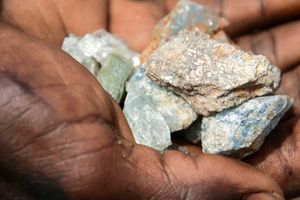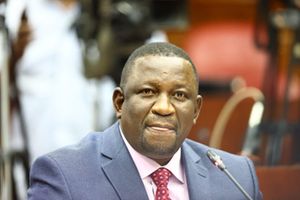
Kenya Chamber of Mines Chairperson Dr Patrick Kanyoro.
Miners and prospectors of minerals have flagged lengthy and unpredictable licensing regimes in Kenya for hurting investments in the sector.
The miners, through the Kenya Chamber of Mines, claim they have to wait for three to six months to get approval for dealership permits while prospecting and mining licences take as much as two years.
The lobby says the lengthy waiting time has persisted even after years of reforms instituted which saw a blanket December 2019 moratorium on the issuance of new permits and licences lifted last October.
“The issuance of licences and permits remains a pain point for the industry because there is complete unpredictability For example, we feel the issuance of dealership licences is a simple process that does not warrant more than 14 days, but sometimes it takes up to three or six months,” Patrick Kanyoro, the Chamber’s chairman, said.
“The current architecture of the licensing regime is skewed to constrict the issuance of licenses, other than to facilitate business. The cure for this is to have a licensing regime that is professional and accountable to the people of Kenya, not a political class.”
The Ruto administration on October 3 unfroze a blanket December 2019 moratorium on the issuance of prospecting licences to allow a fresh countrywide mapping of mineral resources.
The partial lifting of the ban, following approval by the Cabinet, opened the door for investors to resume prospecting on all construction and industrial minerals such as limestone, gypsum, and diatomite.
Strategic minerals
Prospecting and exploration of strategic minerals such as uranium and cobalt will, however, be approved on a case-by-case basis guided by Mining (Strategic Minerals) Regulations, 2017.
The applicants were required to provide updated bank statements or audited financial reports for the last three years as proof of cash to undertake mining or prospecting activities.
They were also required to disclose shareholders of the company, tax compliance certificates from the Kenya Revenue Authority, and programme of work.
The country had been unable to attract new investments due to the moratorium, with some firms redirecting their investments to neighbouring countries.
The Mining Department late last year revoked 1,546 licences that were not compliant with licensing conditions following a comprehensive audit of all mineral rights holders.
“We want to have a situation where in Kenya, anybody who is prospecting, mining or dealing in minerals should have the relevant paperwork, including the artisanal ones whom we have requested to form co-operatives,” Principal Secretary for Mining Elijah Mwangi said in April.
Although mining activity has been present in the country for over 50 years, productivity has remained low, with a scale of operations limited to soda ash, mineral sands, and from 2013 Titanium ores in Kwale which have now been depleted.
The country is, however, believed to hold deposits of other minerals such as copper, niobium, gold, manganese, and rare earth minerals which largely remain under-exploited, dwarfing the mining sector’s contribution to the national economic output.
Kenya's largely untapped mining sector is estimated to have the potential to earn the country $6.6 billion (about Sh858 billion), or 10 percent of GDP.
For years, the sector’s contribution to GDP — a measure of national economic output — has stagnated, hovering between 0.7 and 0.9 percent in five years through 2023.









